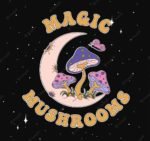The following sections use the given references throughout.
General
The cap grows up to 10 cm in diameter It is depressed in the centre or funnel-shaped when old and has a variable brownish colour which may be ochraceous, orange or reddish.
In the flaccida form the upper surface is matt and silky and the mushroom as a whole is flaccid. In the inversa form the surface is shiny and the mushroom is rigid.
The gills are decurrent and closely packed. They are a similar hue to the cap, but paler. The spore print is white or pale pink.
The stem is up to about 7 cm long and about 0.8 cm thick, a similar colour to the cap.
The smell is agreeably mushroomy and the taste is mild.
Distribution, habitat & ecology
This fungus is a saprobe growing on humus-rich soil, compost or conifer needles from summer to autumn. The flaccida form grows in deciduous woods and the inversa form under conifers. Often numerous mushrooms “fruit” together and it may form fairy rings.
It is most frequent in Europe where it is common. It also occurs in the U.S.A. and there have been reports of it from Mexico, and Australia.
Similar species
The inversa form is sometimes regarded as a separate species, in which case it is distinguished because it grows under conifers rather than broad-leaved trees, has a shinier cap surface, and is more rigid (less flaccid).
Both forms are closely allied to Paralepista gilva (also edible) which can be identified by its yellower cap and stem, and the presence of dark spots on the cap surface. P. flaccida is also similar to the edible Infundibulicybe gibba which has thinner flesh, less crowded gills, and (microscopically) smooth teardrop-shaped spores.
More worrying for consumers of this species is the resemblance to the poisonous Paralepistopsis amoenolens, which however seems to be limited in distribution to North Africa, southern France and southern Italy. P. amoenolens has a strong characteristic smell, a beige colour, and a less depressed cap; also the spores are smooth.
Human uses
According to Marcel Bon this is a good edible mushroom, but other commentators are less enthusiastic, regarding it as poor. In relevant regions care should be taken to avoid confusion with Paralepistopsis amoenolens.
Relating to pest control, a substance called clitolactone or5-(chloromethyl)-3-methyl-2(5H)-furanone, which is claimed to inhibit banana slug feeding behaviour, has been isolated from P. flaccida.
Sale!
Tawny Funnel Cap
Original price was: $300.00.$235.00Current price is: $235.00.
The cap grows up to 10 cm in diameter It is depressed in the centre or funnel-shaped when old and has a variable brownish colour which may be ochraceous, orange or reddish.
In the flaccid form the upper surface is Matt and silky and the mushroom as a whole is flaccid. In the in versa form the surface is shiny and the mushroom is rigid.
Cap. Tawny-buff-yellow in color with thin flesh. Funnel shaped with an enrolled margin and quite often low points around the edges.
Average Cap width (CM): 10
Average Mushroom height (CM): 10


Reviews
There are no reviews yet.